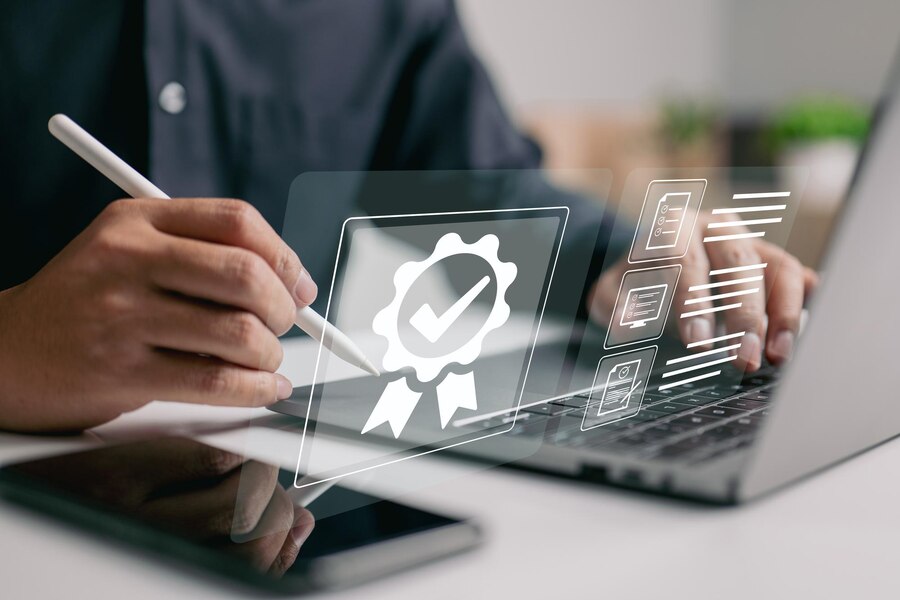With the advent of NFT (Non-Fungible Tokens) a new chapter under applications of Blockchain got opened and gained huge adoption and popularity within the global community.
Where many have even started to deal with NFTs like Grimes earning millions for NFTs,Twitter’s founder auctioning an autographed tweet as an NFT, etc., there is a segment of people who still don’t really understand what an NFT is.
For the newbies, till here, I would say understand NFT as a collectible digital asset that holds great value. Much like an artist’s art is seen as a value-holding investment, now so are NFTs.
As you carry on reading, you’ll certainly get a good understanding of this new phenomenon and will be able to make others understand and learn how they can utilize them to their advantage.
What is an NFT (Non-Fungible Token)?
Non-Fungible means something unique and irreplaceable, and a token is a trading aspect to buy or sell these entities.
It’s a digital token much like Bitcoin, but unlike any cryptocurrency, these are unique, don’t possess the same value, and cannot be exchanged like-for-like.
A non-fungible token can take any form of a piece to be stored on digital grounds (say digital art, a music file) and can be thought of to hold value. NFT types are super varied and are part of the Ethereum blockchain that can store extra information. This spare space that they contain is its significant parameter that allows these tokens to take the form of a video file, an art piece, GIF, etc.
As they hold value, they can be traded (bought/sold) where their worth is largely set by the market and its demand.
What Sorts the Uniqueness of NFTs?
People frown upon people buying and selling tweets, as mentioned above, some consider it stupid for a person who paid $6.6 million for a video by Beeple as they kept a thought to copy this digital file as many times or any other that is included in NFT.
Nonetheless, Non-Fungible Tokens prick the bubble of thoughts as they are designed to give people social security over their digital work that cannot be copied; simply put, ownership of the original work.
(the artist can still retain the copyright and reproduction rights)
Furthermore, it’s absolutely right that there may exist multiple digital versions/copies of an NFT (just like art prints) in the NFT marketplace which are valid parts of the blockchain but none will hold the same value as that of the original.
So, one must not imagine that right-clicking and saving an NFT art piece image can make you the owner of that workpiece with this simple step as the downloaded file won’t hold the information that verifies it to be a part of the Ethereum blockchain.
Mindboggling, isn’t it?
This allows us now to mention a few traits of Non-Fungible Tokens:
- Non-Interchangeable
- Unique
- Indivisible
- ERC-721 standard
Do we have any Marketplace for NFT Trading?
With NFTs in much hype, engineers have managed to develop some amazing and a variety of platforms where NFTs can be stored, displayed, and traded, of course. A user needs to possess a valid user account, acquire a wallet associated with the platform, and fill it with cryptocurrency.
How do things work on an NFT Marketplace?
- Signup
Steps may differ from site to site but the main process is to create an authenticated user account and connect it with a supported digital wallet.
- Buying an NFT
Usually, NFTs are purchased via auction or at a fixed price, but negotiations may also occur between the buyer and seller.
- Selling an NFT
Selling an NFT is not as easy as buying it as if a user is attempting to sell his creation (anything like artwork, audio track) he needs to take care of a few things like uploading the digital asset, tagging with a fixed price, or auctioning it. The platform then approves it and lists it for sale and finally when a bid is accepted by a seller, then the platform conducts a transfer.
- Minting an NFT
Minting is creating, and for this one may consider Ethereum for a start as it’s one of the largest systems for such assets. One would require an Ethereum wallet that supports the ERC-721 standard which is a token standard for NFTs.
Types of NFT Marketplaces
One of the most popular ones among the NFT marketplaces, as of now in the market, are art-oriented platforms that are highly preferred and used by the audience. Nevertheless, there are many niche-based platforms as well that list specific kinds of NFT assets. Some of the renowned names are:
(NFTs are swaying the gaming field as well where in-game purchases can also be facilitated via NFTs. they can be bought/sold for some playable assets like avatars, swords, skin, etc.)
Whether Or Not, NFTs Are Here to Stay!
For the uber-rich class, NFTs are a new plaything where there is real hefty money to be made if your valuables can really make it happen.
Well, non-fungible token, though, is in its infancy but it has made an exponential difference in the digital crypto trade business and has given artists a valuable platform to represent their unique digital talent.
Let us know if you find this article interesting and insightful.CodeGlo loves sharing valuable and worthy information with our readers where our IT experts and pundits help us render the latest occurring in the IT market.
To know more about NFTs and how you can get a headstart, get in touch with our Blockchain experts and they will assist you in ways how you can best reap benefits out of this new blockchain-based concept.








